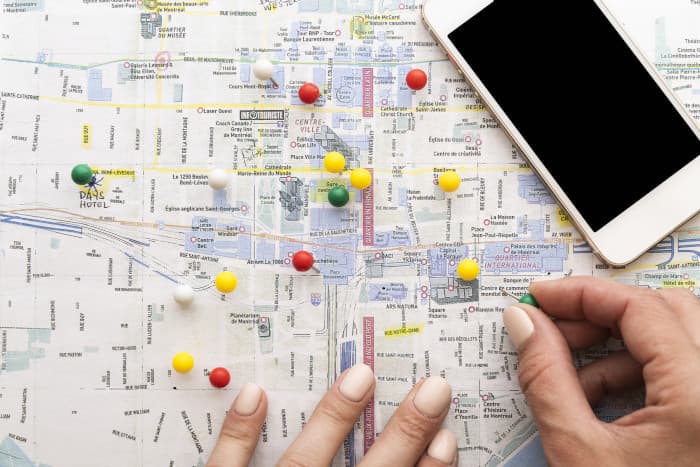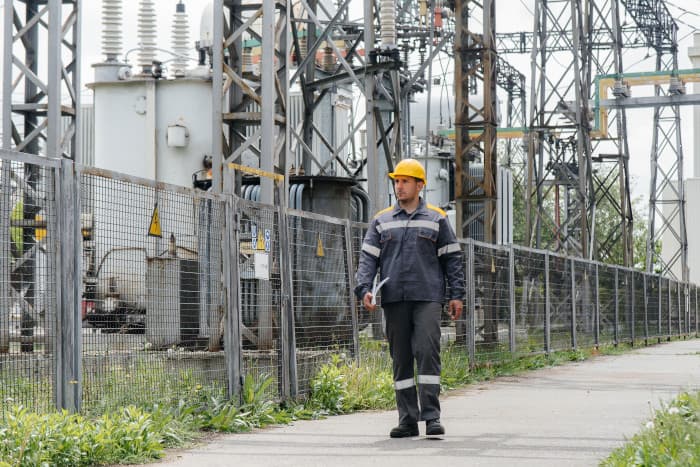Clearly communicating your service boundaries is essential for attracting and retaining customers. Service area maps are powerful tools that visually represent the geographic regions where your business operates, making it easier for potential customers to understand if you can meet their needs.
Whether you’re a small local business, a franchise, or a large company with multiple locations, creating a service area map is invaluable for clearly defining and communicating the regions you serve. A service area map helps businesses of all sizes and structures outline their operational boundaries with precision, ensuring that potential customers understand where services are available. For franchises and large companies, these maps are particularly useful in highlighting specific service zones for each location, improving customer clarity, optimizing logistical planning, and enhancing overall service delivery. By visually mapping out your service areas, you ensure that your customers receive accurate information and can easily determine if your services meet their needs.
In this guide, we explore who benefits most from service area maps and how they can help various industries streamline their operations and engage more effectively with their target audiences.
Service area maps are beneficial for a wide range of businesses and organizations that operate across specific geographic regions. Here’s a detailed look at who benefits most from service area maps:
1. Local and Regional Businesses
- Service Providers: Businesses such as plumbers, electricians, and landscapers operate within specific geographic regions. A service area map helps them clearly communicate the boundaries of their service coverage to potential customers. This prevents misunderstandings about whether or not a service is available in a particular location and helps manage customer expectations, ultimately improving customer satisfaction and reducing the number of inquiries from out-of-service-area individuals.
- Retail Chains and Franchises: For businesses with multiple locations or franchises, a service area map can show customers where they can access specific services like delivery or curbside pickup. This is particularly useful for retailers who offer delivery services but do not cover all areas equally. A well-defined map helps customers identify if their location is within the service area, improving the efficiency of the service and enhancing the customer experience
- Mobile Businesses: Mobile businesses, such as food trucks, mobile pet grooming, or on-site car repair services, also benefit from having a service area map. These businesses often travel to various locations, making it essential for them to communicate where they will be operating at any given time. A service area map allows potential customers to see if they are within reach of the mobile service, which helps in planning events or scheduling appointments. By clearly outlining their service boundaries, mobile businesses can reduce confusion and better serve their clientele.
2. Healthcare Providers
- Hospitals and Clinics: Healthcare facilities use service area maps to inform patients about the regions they serve. This includes emergency services, specialized treatments, and routine care options. Clear communication of service areas helps patients understand where they can receive care, which is especially important in urgent or emergency situations. It also aids in patient planning and logistics, ensuring that individuals know which facilities are accessible to them.
- Home Healthcare Services: Providers such as home nurses, physical therapists, or other in-home care professionals use service area maps to delineate the regions they cover. This helps in scheduling and coordinating visits, and provides clarity for patients and their families about service availability in their specific location.
3. Utility Companies
- Electricity, Water, and Gas Providers: Utility companies use service area maps to show the regions they cover for essential services. This is crucial for new customers to understand if they can access these utilities and for existing customers to know if there are changes in service areas or coverage. The maps also help utility companies in managing customer inquiries and streamlining service requests.
4. Logistics and Delivery Services
- Courier and Shipping Companies: Delivery and logistics companies use service area maps to optimize their delivery routes and define their service zones. This helps in efficient route planning, reducing delivery times, and managing operational costs. Clear service area boundaries also help customers determine if their location falls within the delivery range, improving customer satisfaction and reducing service-related disputes.
- Food Delivery Services: Restaurants and food delivery services use service area maps to clearly outline the regions where they can deliver. This helps customers understand if they are eligible for delivery and supports the efficient management of delivery operations. By clearly communicating delivery zones, businesses can also avoid over-promising and under-delivering, which can negatively impact customer satisfaction.
5. Real Estate and Property Management
- Real Estate Agents and Agencies: Real estate professionals use service area maps to showcase the neighborhoods and regions they specialize in. This helps potential buyers and sellers understand the areas covered by the agent or agency, making it easier to find properties that match their criteria and facilitating better-targeted marketing efforts.
- Property Management Companies: These companies use service area maps to define the geographic regions they manage. This is useful for current and prospective tenants and property owners to understand which areas are covered and where the company’s management services are available. It also aids in managing property portfolios and coordinating maintenance and management activities.
6. Emergency Services
- Fire Departments and Ambulance Services: Emergency services use service area maps to delineate their coverage zones, which is critical for coordinating responses to emergencies. The maps help in managing resources and ensuring that help is dispatched to the appropriate locations quickly. They also assist in planning and training, ensuring that all areas are covered effectively.
7. Educational Institutions
- Schools and Universities: Educational institutions use service area maps to indicate the regions they serve, such as school districts or recruitment areas. For schools, this helps parents and students understand which schools they are eligible to attend based on their residence. For universities, it helps in targeting recruitment efforts and identifying areas with potential student populations.
8. Non-Profit Organizations
- Charities and Community Services: Non-profits use service area maps to communicate the geographic regions they support. This could include areas for food distribution, outreach programs, or community services. The maps help beneficiaries and donors understand the scope of the organization’s work and identify how they can get involved or receive assistance.
9. Tourism and Hospitality
- Travel Agencies and Tour Operators: These businesses use service area maps to illustrate the regions they cover with their travel packages and tours. This helps potential customers understand where they can travel or explore with the agency’s services, making it easier for them to choose suitable options based on their interests and location.
- Hotels and Resorts: Hotels and resorts use service area maps to highlight their proximity to local attractions, transportation options, and surrounding areas. This information is valuable for guests planning their stay, as it provides context about nearby activities and amenities, enhancing the overall guest experience.
10. Consulting and Professional Services
- Consulting Firms: Firms offering specialized services such as legal, financial, or business consulting use service area maps to define the regions they serve. This helps potential clients understand if the firm’s services are available in their area and supports strategic planning and client outreach.
Service area maps are more than just geographic representations; they are simple, low-cost components of effective communication and strategic planning for a wide range of industries. By defining and visualizing your service boundaries, these maps help you attract the right customers, optimize your operations, and enhance your overall service delivery. From local businesses and healthcare providers to non-profits and educational institutions, leveraging service area maps can lead to improved customer clarity, targeted marketing, and operational efficiency. Embrace the power of service area maps to clearly outline your reach and make informed decisions that drive success in your business or organization.



